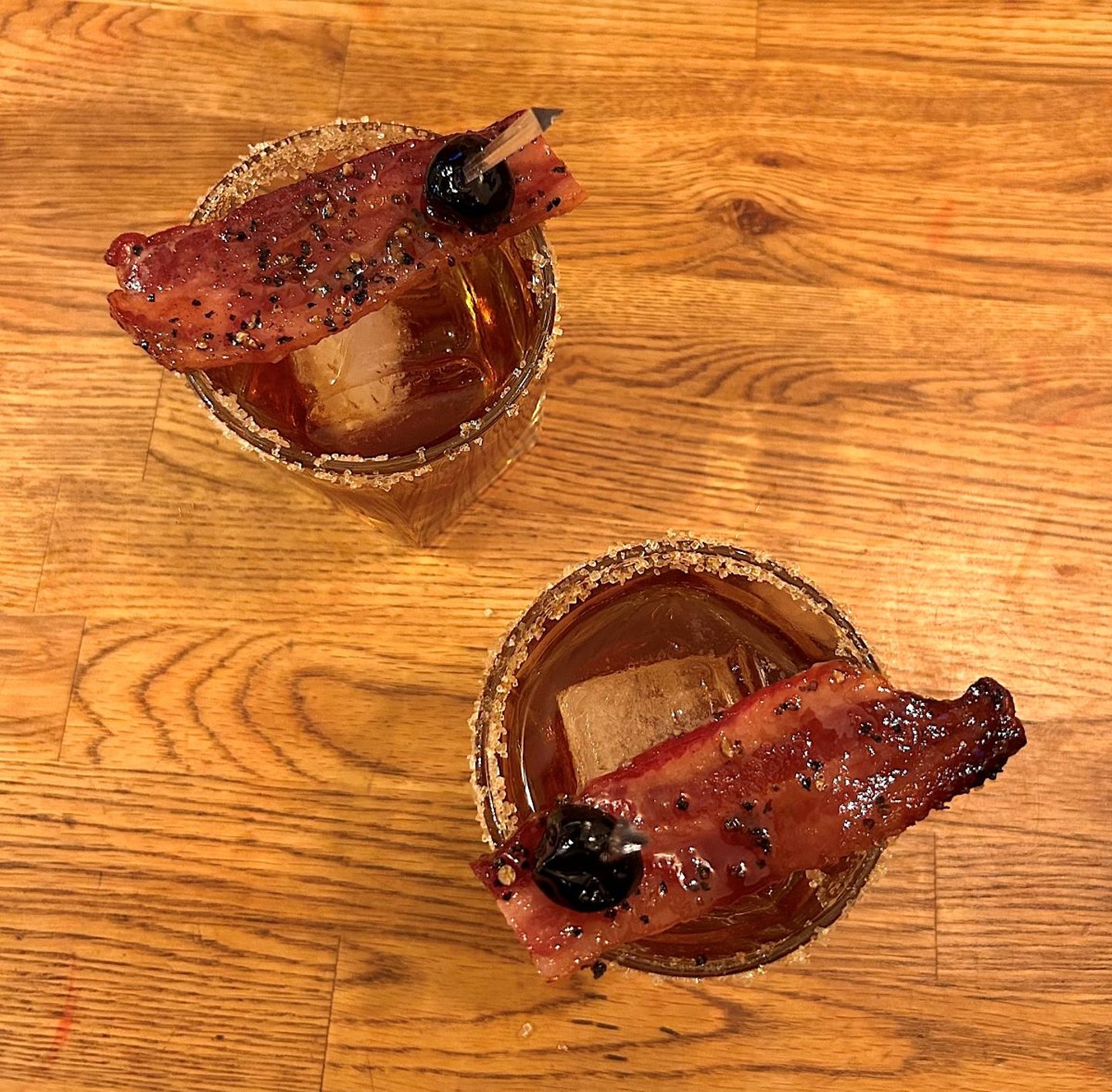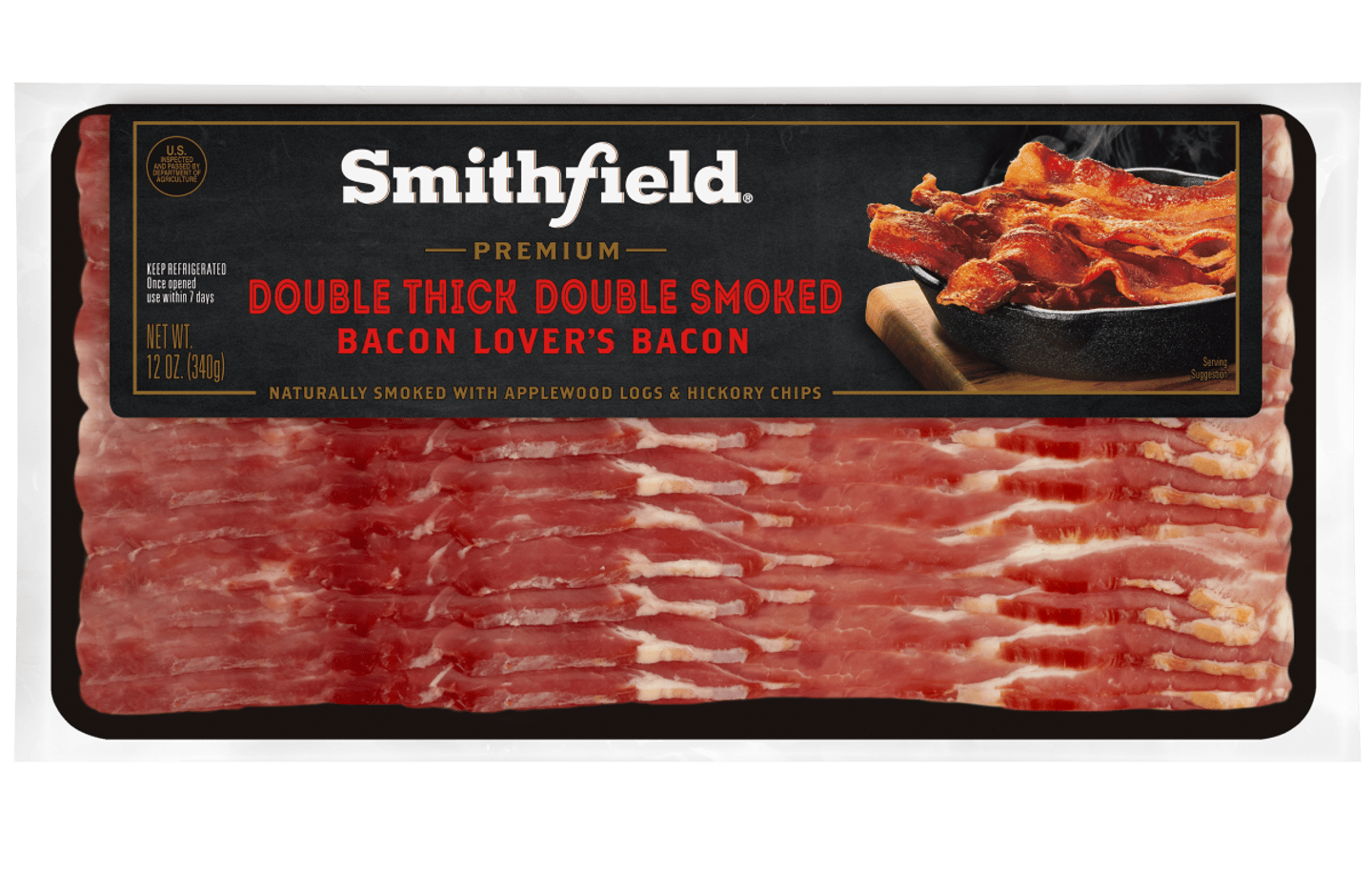Bacon Goes Upscale
The popularity of bacon has blossomed to a degree that, today, premium products have a wide-open opportunity to command purchasing as consumers continue to look for the next way to enjoy it. This isn’t just influencing consumers’ breakfast choices, though: Premium bacon can emerge as an enticing presence just about anywhere these days, even in cocktails.
At Off the Brook, a restaurant in the New York City suburb of Merrick, N.Y., the specialty cocktail menu includes the Maple Bacon Old Fashioned. A slice of premium glazed bacon floats on top of Sap56 whiskey, bitters and orange peel; over a dried cherry; and across a maple cinnamon sugar rim. Sure, the bacon Bloody Mary has been around for a while, but the Off the Brook concoction is indicative of the regard in which premium bacon products are held today.
[RELATED: Why the Bacon Trend Will Never Be Over]
Jessica Scarlett, brand manager for Smithfield at Smithfield Foods, in Smithfield, Va., affirms that bacon has broad appeal, but what constitutes value can change from one consumer to the next. For some, that means making restaurant-quality food at home.
“As consumers look for more value in their bacon purchases, a segment of those prefer premium cuts of bacon and enhanced flavor profiles,” says Scarlett, adding, “Consumers can use premium bacon to recreate their favorite out-of-home dining dishes.”
A Cut Above
From the perspective of the category, premium products can have a prominent effect.
“Premium bacon elevates the category and offers retailers additional selections to provide consumers with distinctive flavors, such as Smithfield’s Double Thick Double Smoked Bacon Lover’s Bacon and Maple Bacon, but also preferred higher-quality cuts, for instance, Smithfield Center Cut Bacon as a leaner option,” notes Scarlett.
As a favored and regular purchase, bacon draws a lot of consumers, but, to get the better purchase that grocers want, it should be clear to shoppers what the value proposition is.
“Positioning premium bacon to showcase the product benefits and added value to the overall bacon category adds to the strength of the retailers’ set,” explains Scarlett. “Establishing a strong presence in the retailer set is accomplished by a variety of elements, including a robust on-shelf brand block, additional bunkers, and point-of-sale material that speaks to the premium-ness of the cuts and flavors.”
To help bring this impactful merchandising to life, “Smithfield works closely with retailers to develop programs designed to drive purchase consideration,” she says. “We also provide point-of-sale materials to help consumers at point of purchase.”
Today, grocers have the ability to connect with consumers in a lot of ways, and making the case for premium bacon’s value can generate better rings with less effort than once might have been the case, by using different media in combination.
For Scarlett, of course, that means promoting the particular benefits of Smithfield products.
“Promotion through retailers’ websites, circulars and social media channels helps to drive not just brand, but category awareness for the attributes of the Smithfield Premium Bacon line as consumers look for ways to enhance their dining experiences,” she notes.
From the entrepreneurial perspective, flavored bacon, particular cuts and processing can persuade consumers to pay a little bit more and make additional premium purchases. Whether they tend to experiment with new bacon flavors or emphasize traditional processing, specialty meat stores that are bacon producers as well as retailers are attractive to a lot of consumers these days and provide a view on the premium bacon consumer.
[RELATED: Meat Trends Worth Heeding]
When he and his cousin purchased the company from their respective fathers, Mike Holland, owner of Duncansville, Pa.-based Holland Brothers Quality Meats & Catering, says that he wanted to make bacon a bigger and more conspicuous part of the business. At that time, Holland Brothers offered three varieties: regular, pepper and Cajun. Holland decided that he would expand the bacon offering, testing different spice combinations and developing new flavor profiles.
The company now offers seven flavors and can produce seasonal bacon, including apple cinnamon and pumpkin spice flavors. Other items that received trial include a honey barbecue bacon.
“The thing about bacon, when you have flavor profiles, you get your regular customers who just love bacon, regular bacon,” says Holland. “In a new flavor profile, now it’s an added sale. They keep their pound of bacon, and see you have a jalapeño bacon, and they say, ‘Give me a pack of that, I’m going to try it.’ Now you’ve sold 2 pounds of bacon compared to 1 pound of bacon. Consumers are always looking for something new, and the thing about bacon is, you can put bacon in just about anything, and you’re bacon now is phenomenal.”
So, flavored bacon has a double advantage — one in straight-up consumption, the other in providing consumers with a unique flavor additive.
Self-Selling
According to Patrick Fleming, new business development manager at Chicago-based Midan Marketing, grocers can promote premium bacon as a special meal component or as a flavoring that easily brings additional taste to any number of dishes.
“It’s a meat condiment,” notes Fleming. “It can make anything it goes on taste better.”
From its traditional role as a breakfast staple, to bacon ice cream, to bacon Manhattans, the acceptance of bacon is enormous across the United States. As such, the opportunity to promote it is constant. Further, because flavor is bacon’s main appeal, with ease of preparation another plus, Fleming points out that the ability to get consumers to trade up is vast as a flavor component for cooks who learned a lot during the COVID-19 pandemic but who might be time-pressed now and can use bacon to elevate a dish, or as the centerpiece of an occasion meal like the weekend breakfast that consumers look forward to all week.
Premiumization is a trend across a lot of food sectors, and bacon in particular, he says. With bacon, the pursuit of an even more premium variety is constantly emerging from processors. These days, thick-cut bacon is getting a step up in weight class to steak-cut. Thus, premium bacon covers a lot of flavor profiles and cuts, but also price points.
[Never miss a story – sign up for Progressive Grocer's FREE Daily newsletter]
Grocers that make a promotional point of premium bacon on its own and as a meal component to draw consumers to its place in the case can let consumers apply their own personal price/value equations regarding taste and budget.
In some cases, a dedication to tradition and old-fashioned quality is enough to make people recognize that your bacon is premium, or at least that’s the case for Mark and Laura Reynolds, owners of Country Meat Market, in Mobery, Mo.
“Bacon is our No. 1 item,” asserts Mark Reynolds. “Country Meat Market has won the National Grand Champion bacon six times. We offer one cut [in] 1-pound packages and 1.5-pound packages. We have regular bacon, peppered bacon, and ends and pieces. Nothing fancy, nothing trendy. Just amazing bacon. Word of mouth drives our bacon sales. We do not advertise.”








